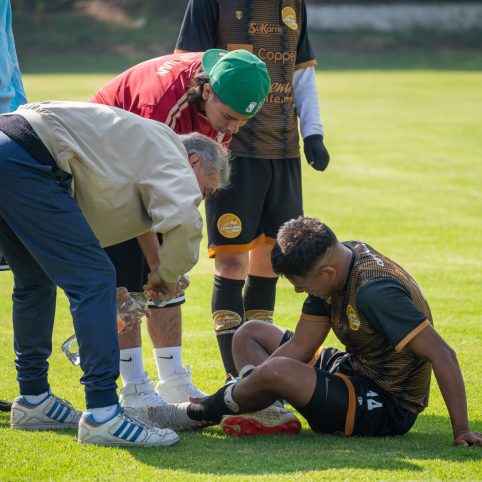Cuts and Scratches
In most cases, minor cuts and scratches do not pose any problems for a person with haemophilia. A little pressure is usually enough to stop the bleeding. A person with a bleeding disorder does not cut more easily, bleed more profusely, or bleed faster than normal. They simply bleed for longer.
Joints and Muscle Bleeds
For those severely affected, a major problem can be internal bleeding into joints, muscles and soft tissues. All of us damage our muscles in small ways in the activities of everyday life. Most people repair that damage automatically. For the person with a severe bleeding disorder, however, the tiny breaks in the blood vessels in joints and muscles may continue to bleed as a result of trivial twists and strains. These bleeds are sometimes described as “spontaneous” because it is impossible to identify the exact injury which caused them.
Soft Tissue Bruises
An ache or irritation in an affected area is usually an indication that a person with haemophilia is getting a bleed. If left untreated pain may become excruciating. In the case of joint bleeding, the blood which has escaped into the joint has a very damaging effect on the surface of that joint. Once a joint becomes damaged then bleeding will occur more frequently resulting in a “target joint”. The majority of bleeds into joints and muscles occur in the lower limbs, with ankles and knees being the worst affected in most people. Soft tissue bruises will always occur in people with bleeding disorders. Although these may look serious they usually do not require any treatment. Sometimes if the bruise is increasing in size and causing pain, then factor treatment may be recommended.
Head, Face and Neck Injuries
After a blow to the head, face or neck sufficient factor must be given immediately to bring the factor level to 100%. All these injuries must be assessed at a treatment centre. If the injury is significant enough a person with a bleeding disorder may need to be admitted to hospital and may require a CT scan to ascertain the extent of bleeding if any.
Minor Head Injuries
These are injuries that can lead to bruising or even small cuts on the head. These injuries should always be treated either at home or at the treatment centre.
Serious Head Injuries
These result from a severe bump on the head. A head injury is always serious if the person is knocked unconscious. These injuries should be treated quickly as a possible and the patient taken to the nearest haemophilia centre.
Other Serious Bleeding Episodes
- Vomiting blood
- Coughing up blood
- Passing blood in bowel motions (stools will be black in colour)
- If you are concerned about a bleed, talk to you mum or dad straight away, or if you have transitioned to the adult clinic, call the National Coagulation Centre on 01 416 2141.
